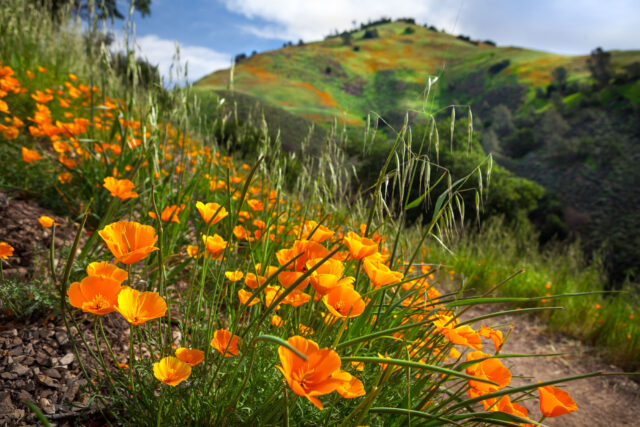If the year 2023 had a theme, it might have been “get ready to pivot on a dime.” That’s what water managers had to do when the driest three-year period on record gave way to a series of atmospheric rivers early in the year that pummeled the state.
Volatility was the name of the game. Water managers who had hustled to innovate and adapt during the drought had to manage a sudden influx of water. As atmospheric rivers followed one another in quick succession, the poor condition of California’s crisis communications came to the fore. Swollen rivers and an epic snowpack led to the return of Tulare Lake, which in turn engendered a mad dash to save dairy cattle in harm’s way and exposed weaknesses in the valley’s planning and emergency responses. While flooding could have been worse, some (particularly low-income) communities were hit hard.
In terms of water storage, the rainfall was a godsend. Water managers breathed a sigh of relief as reservoirs filled and groundwater recharge got seriously underway. Yet our adjunct fellow Greg Gartrell sounded a note of caution, reminding us that the full reservoirs of 2019 had dwindled dangerously just two years later. One wet year, he said, was not cause for complacency.
We applied rigorous research to discover what could help Californians adapt to increasingly severe dry periods and increasingly severe storm patterns. What’s going well already, and what could be improved? In 2023, our experts looked at:
Managing abundance: The rapid, unexpected shift from years of drought to near-record precipitation has become a hallmark of our changing climate. California is experiencing fewer near-average years, and a lot more weather whiplash. That means that water managers, reservoir operators, growers, and others will need to be poised and ready to capture and store as much water as possible whenever it comes. Advance preparation and coordination are key, and regulatory reforms can help.
We conducted an early post-mortem on the wet season in the form of a virtual panel discussion in May. Then we spoke with stakeholders from across the state, seeking to understand what had gone well and where processes could improve. After a series of frank discussions, we crafted our learnings into our pithiest Priorities for California’s Water yet, featuring useful analysis and actionable recommendations to help Californians sock away water for the dry times that always return.
Our work has proven to be influential. At our fall conference, when I asked California Natural Resource Agency’s Nancy Vogel about the state’s plan for water, she quoted the Priorities brief, sat back, and said, “That’s it. That’s the state’s plan.” (Watch the video to see our full exchange.)
Changing land uses in the San Joaquin Valley: Climate volatility isn’t the only factor impacting the future of agriculture in the San Joaquin Valley—the Sustainable Groundwater Management Act (SGMA) and increased environmental regulations will also play a major role. And these changes will impact many valley residents—especially smaller, rural, low-income communities. We’ve examined how SGMA will affect community water supplies, air quality and dust, small farms, and jobs in the region.
In 2023, we revised our estimates of potential land fallowing under SGMA, finding that in the worst-case scenario, nearly 900,000 acres of farmland would be fallowed by 2040, almost 50,000 jobs would be lost, and regional economic activity would decline by 2.3%. But such a dire outcome is not inevitable. We followed up that analysis with a report that summarized years of research, providing fact-based analysis to show how the valley can best navigate the difficult water and land transitions coming its way. And a half-day, in-person event pulled in a diverse group of participants and a deeply engaged (and sometimes cantankerous) audience. That’s as it should be. These are complicated issues that demand we have tough conversations as we chart a course forward.
Offering solutions: We’ve looked at the urgent need for community involvement in the restoration of freshwater ecosystems. We’ve contributed to important conversations about water rights reform in the state. We’ve interviewed changemakers about environmental justice, PFAS, groundwater recharge, tribal leadership, and innovative efforts to “squirrel away” water. We’ve spoken with researchers about carbon offsets and ran an in-depth analysis of the State Water Board’s proposed regulations around urban water conservation. And we’ve served as a resource for local, state, national, and international media on dozens of occasions about what’s been happening in our volatile and internationally important state.
Things are changing. And despite the challenges, there is also a sense of momentum—a sense that we are moving into a new era where transformation is more possible than ever, in part because climate change’s effects are being felt so profoundly.
In 2023, we said goodbye to beloved staff, we saw founder and director Ellen Hanak step down (while staying on as a senior fellow), and I joined as director in September. I’m thrilled to continue the center’s mission with our excellent team. We look forward to continuing our work to find policy fixes to help this great state.





